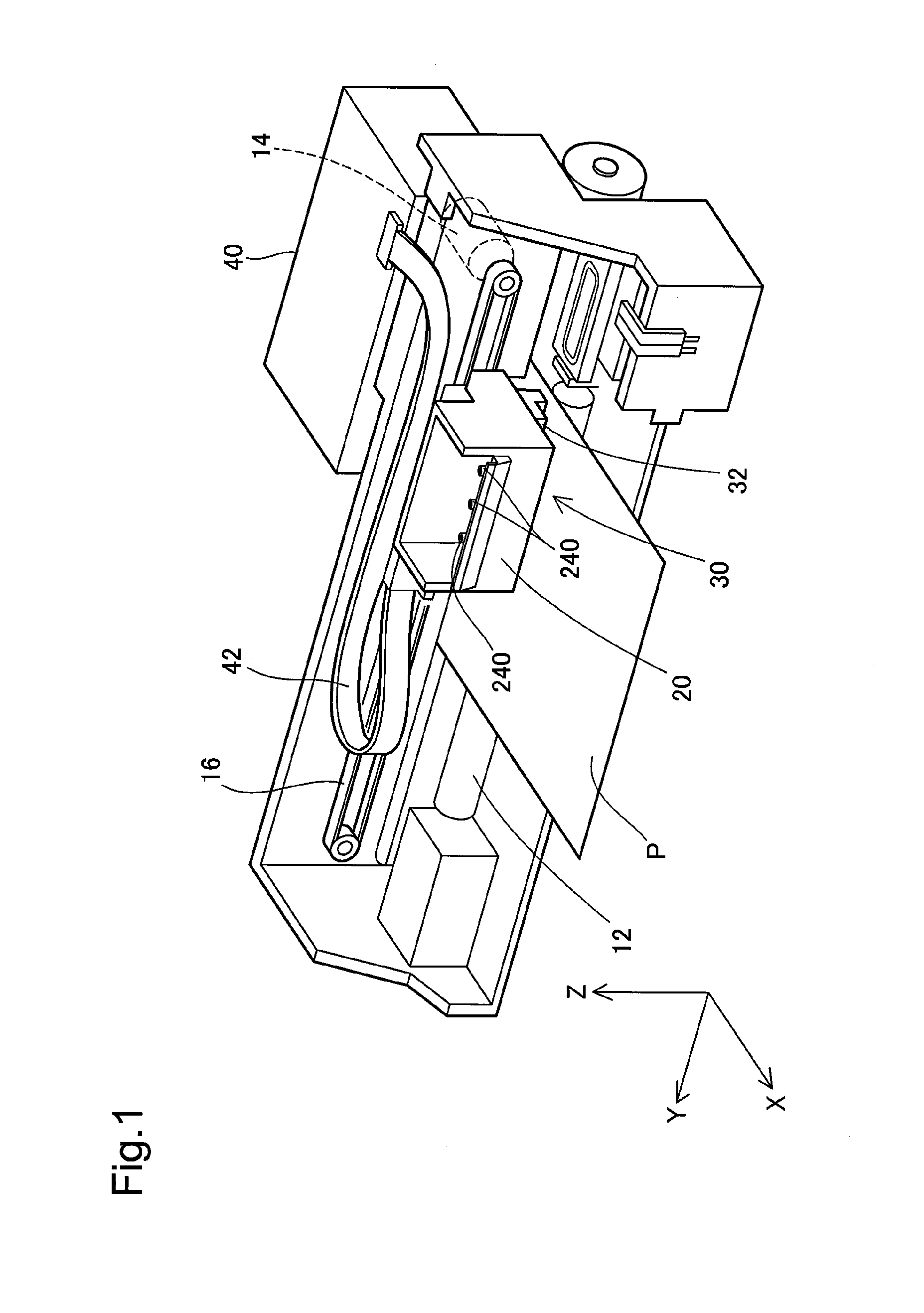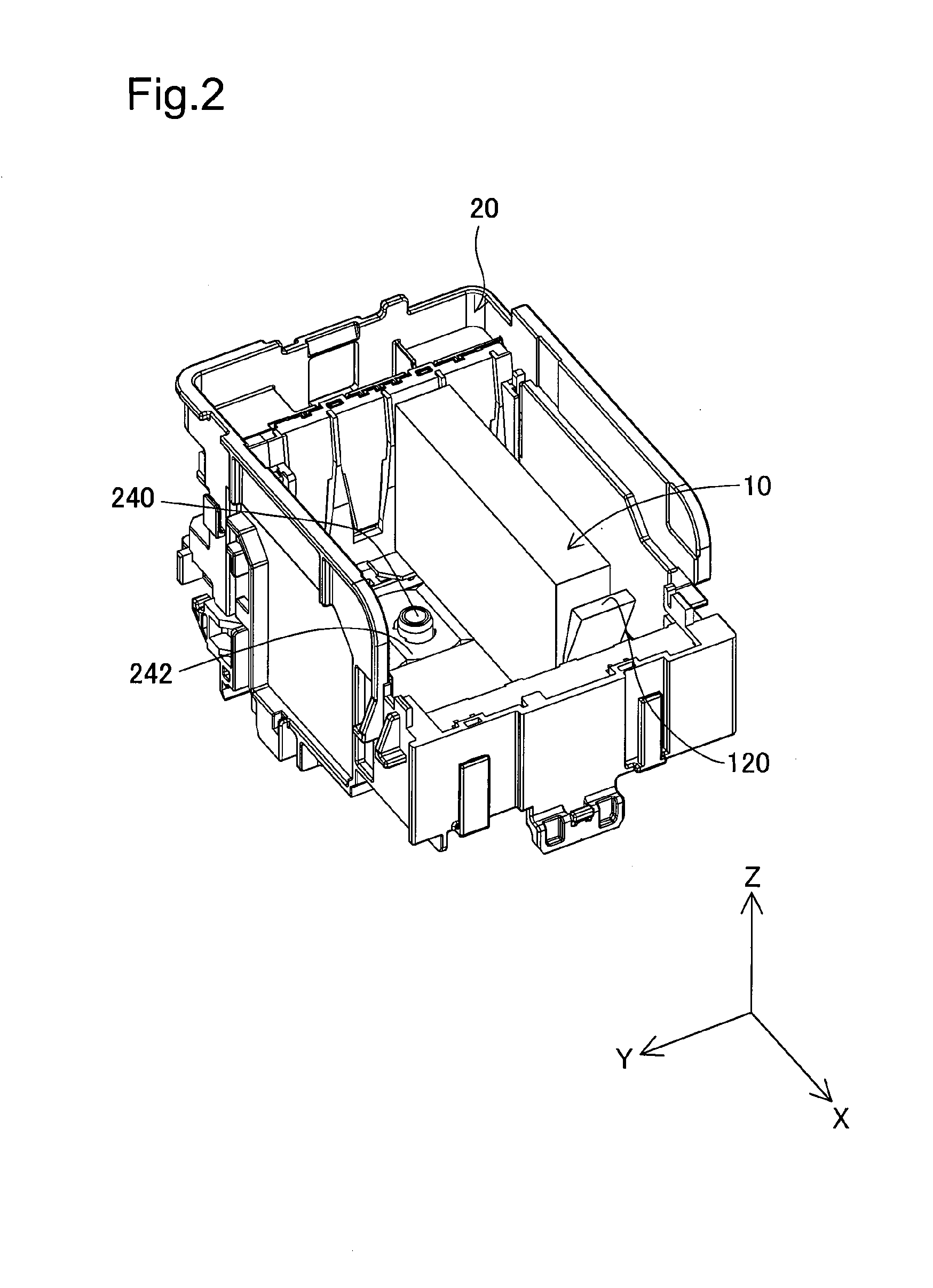Printing material cartridge and printing material supply system
a technology of printing material and printing cartridge, which is applied in the direction of printing, etc., can solve the problems of undesired high voltage applied to failure of the circuitry and the possibility of failure or insufficient connection between the plurality of terminals of the printing material cartridge and those of the printing apparatus, so as to reduce the possibility of failur
- Summary
- Abstract
- Description
- Claims
- Application Information
AI Technical Summary
Benefits of technology
Problems solved by technology
Method used
Image
Examples
first embodiment
A. First Embodiment
[0091]FIG. 1 is a perspective view showing the structure of a printing apparatus according to a first embodiment of the invention. FIG. 1 includes indication of XYZ axes that are orthogonal to one another. The XYZ axes in FIG. 1 correspond to the XYZ axes in the other drawings. Some of the subsequent drawings also include similar indication of the XYZ axes. In this embodiment, when the printing apparatus is in a position in use, the Z-axis direction is the vertical direction, and a face in the X-axis direction of the printing apparatus forms the front face. This printing apparatus is a small-sized inkjet printer for personal use and has a sub-scan feed mechanism, a main scan feed mechanism, and a head drive mechanism. The sub-scan feed mechanism includes a paper feed roller 12, which is driven by a paper feed motor (not shown), to feed a sheet of printing paper P in a sub-scanning direction. The main scan feed mechanism includes a carriage motor 14 to move back an...
second embodiment
B. Second Embodiment
[0179]FIG. 17 shows the structure of a holder 20a according to a second embodiment. The general structure of the printing apparatus and the structure of the ink cartridge 10 of the second embodiment are the same with those of the first embodiment. FIG. 17 shows the state in the middle of insertion of the cartridge 10 to the holder 20a. A pair of longitudinal guide members 610 (first sub-guide members) and a pair of lateral guide members 620 (second sub-guide members) are provided, in addition to the fitting rib 270, in the vicinity of a terminal block 500a located in each slot of the holder 20a. As discussed above in the first embodiment, the fitting rib 270 also serves as the guide member to guide the cartridge 10.
[0180]The pair of lateral guide members 620 are located such that the inner surfaces of the pair of lateral guide members 620 are in contact with the outer surfaces of the pair of lateral guide wall members 184 of the cartridge 10 (FIG. 3). In the proc...
modification 1
[0218]The above embodiments regard the application of the invention to the on-carriage type printing apparatus which has a holder (cartridge attachment section) on the carriage. The invention may also be applicable to the off-carriage type printing apparatus which has a holder (cartridge attachment section) on the location other than the carriage.
PUM
 Login to View More
Login to View More Abstract
Description
Claims
Application Information
 Login to View More
Login to View More - R&D
- Intellectual Property
- Life Sciences
- Materials
- Tech Scout
- Unparalleled Data Quality
- Higher Quality Content
- 60% Fewer Hallucinations
Browse by: Latest US Patents, China's latest patents, Technical Efficacy Thesaurus, Application Domain, Technology Topic, Popular Technical Reports.
© 2025 PatSnap. All rights reserved.Legal|Privacy policy|Modern Slavery Act Transparency Statement|Sitemap|About US| Contact US: help@patsnap.com



